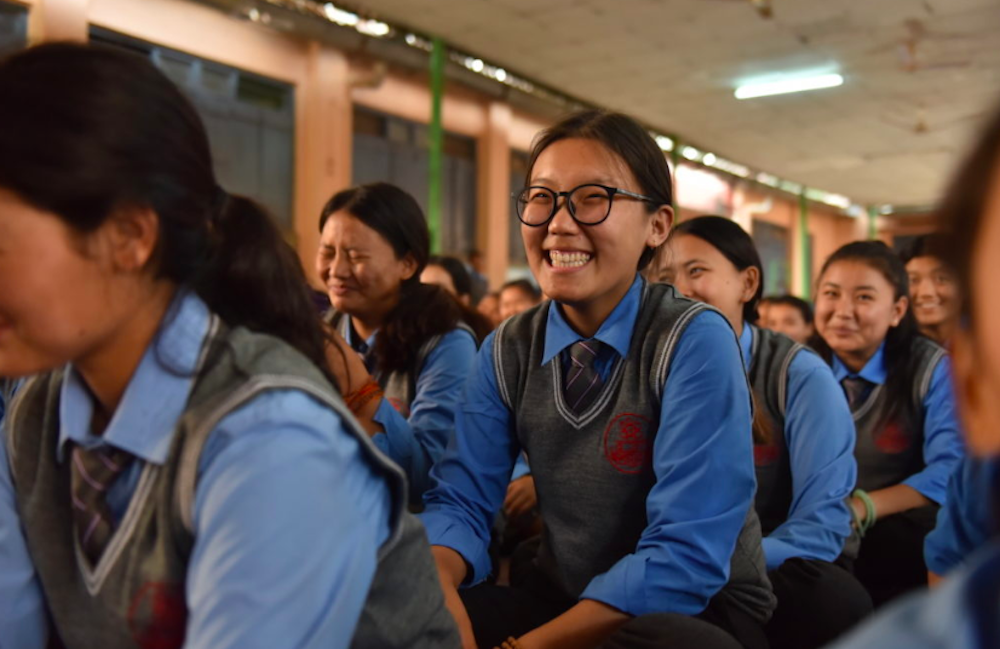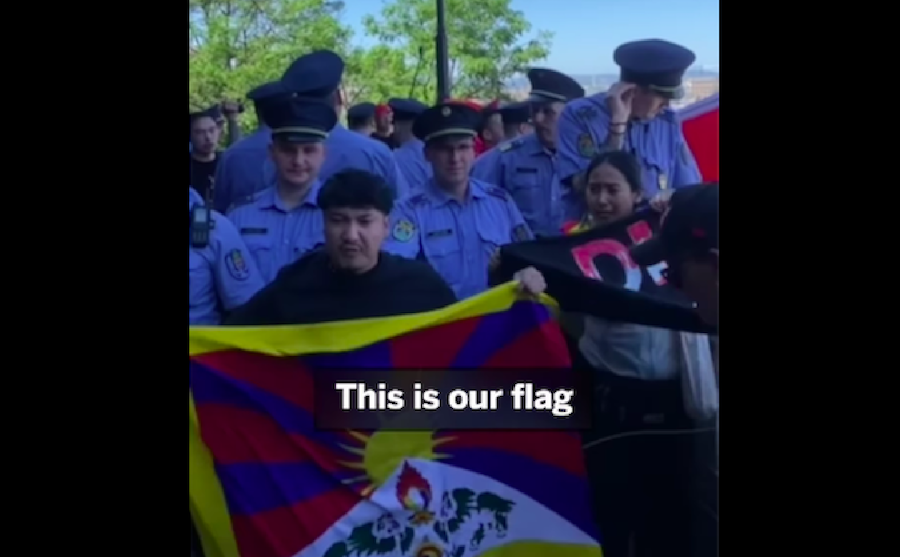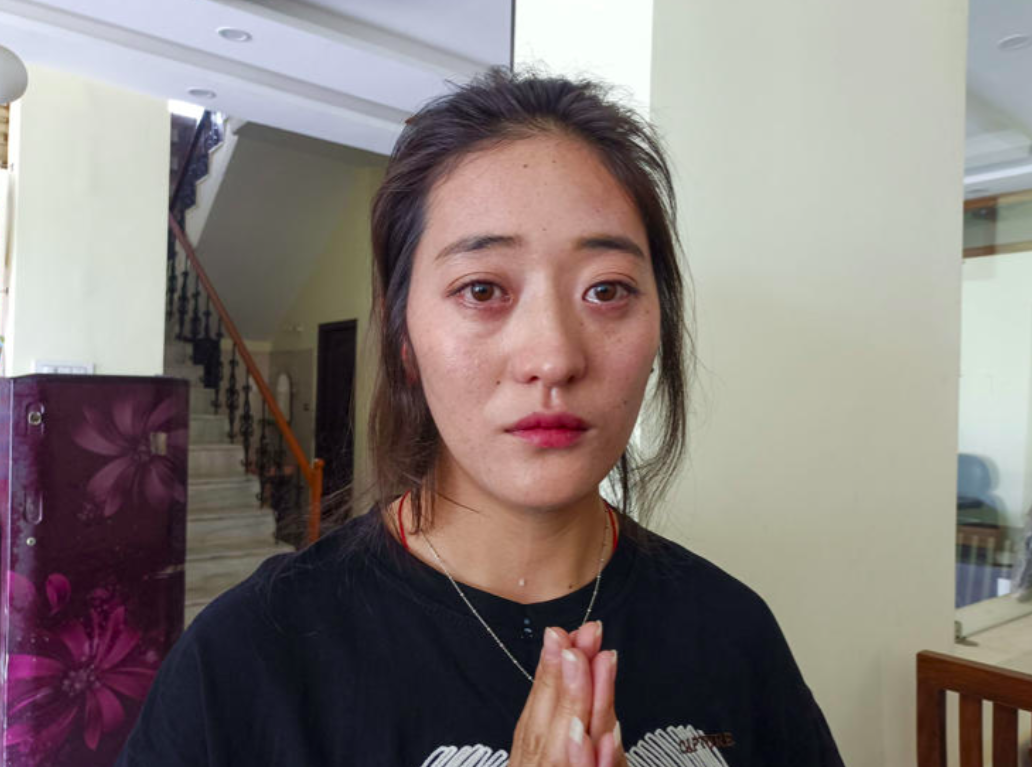By ANH DO
Special to the Register
I am not in the habit of signing petitions but just felt compelled to do so – in support of the release of a boy allegedly held by the government of China.
Tibet’s stolen child. His name is Gedhun Choekyi Nyima.
More importantly, he is known as the Panchen Lama, a most revered religious leader and in the eyes of his countrymen, second only to the Dalai Lama.
Now 14, he was abducted and taken to live with the Chinese at age 6, according to activists campaigning for his cause. He remains the world’s youngest political prisoner.
Mike Stadler and his wife, Lamu, have followed his plight since 1995. They gave me a stack of papers detailing the story. Then I logged onto the Internet for hours to learn more. Meeting the couple, I hear about how they turned their Los Alamitos home into a factory, painting posters, making T-shirts, organizing rallies to push for a Land of Snows that would be free from Chinese rule. “We live in such an amazing society with all of our rights that we cannot forget those who have no rights,” said Stadler, fresh from a stint as president of Los Angeles Friends of Tibet.
He met his future bride after some months in the Peace Corps in Nepal. She was raised in India, the child of Tibetans. Their worlds melt together in a way that I admire. There are no boundaries when they work. And the entire family takes part in fighting for freedom for a place they have never visited, for a boy they have never met.
It all started in the ’90s when Lamu, during a trip to Asia, came upon a pile of bodies lying on top of one another, bodies of Tibetan refugees fleeing to Nepal, bodies “that looked like dead, but within minutes, I could see an arm moving here, moving there.
“The people had crossed the mountains, and they had frostbite. Many would have to cut their legs off.”
That night she couldn’t sleep. The next morning she began asking questions: What would happen to these men and women? How can we help others desperate like them?
What must be done for those who cannot choose the religion they want to worship, living under a government that never stops repressing them?
The Stadlers started researching politics and Buddhism. Daughter Laura, a high school senior, spent her summers doing a Walk for Tibet, going from San Diego to Los Angeles, selling native crafts, camping out in the nation’s capital to boost awareness. Her older sister, Nima, a college student in Santa Cruz, flew to Dharamsala, India, the seat of the Tibetan government in exile, to teach orphans in a children’s village.
Nima did not want to come back home. “Can I stay?” she asked her parents. “I want to stay, please. There is beauty and pain and generosity. If you want to know real life, Mom, live here.”
People like to think of the crisis of Tibetans “as something in the past. It’s history. It’s done,” says Laura, 18. “But it’s not. People are still suffering.
“That’s why we do it. We fight because it’s still going on.”
What’s going on is the violation of human and religious freedom in a country where Chinese leaders have destroyed more than 6,000 monasteries, stealing and murdering throughout their brutal occupation of more than 50 years – then kidnapping the Panchen Lama within days of his recognition by the Dalai Lama in 1995.
He is believed to be under house arrest near Beijing.
And the supposedly atheistic Chinese government chose its own Panchen Lama, forcing Tibetan monks and nuns to help enthrone him, sparking more protests in Orange County’s population of more than 500 Tibetans.
So one recent Friday, the Stadlers found themselves actors in a street theater outside the Chinese Consulate in Los Angeles, protesting. They circulated petitions and went with the crowd to deliver thousands of them, like mine, to show that the Panchen Lama is not forgotten. Supporters around them set up a display of China’s “Great Wall of Shame.”
They are used to bypassers gawking. A lot of them say: “Where is Tibet? Wow, we didn’t know about this situation with Tibet. What can we do?” recalls Lamu, 46. Every event, every movie, every demonstration depicting the horror in the country of her parents’ birth, she tries to connect to. There are fliers to distribute, marches to join, former political prisoners to listen to, fund-raisers to host.
“I never like to push people, but I try to share my point,” she says. “Look at all the voices speaking out. Look at his holiness, the Dalai Lama. All of them could sit back in the monastery and be comfortable.
“They’re old, compared to us, but they’re out, making noise.
“We have to do that, too. We’ll do as much as we can,” she says in her altar room, surrounded by symbols of compassion and peace. “Until I die I will fight for the people.”









